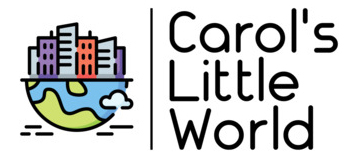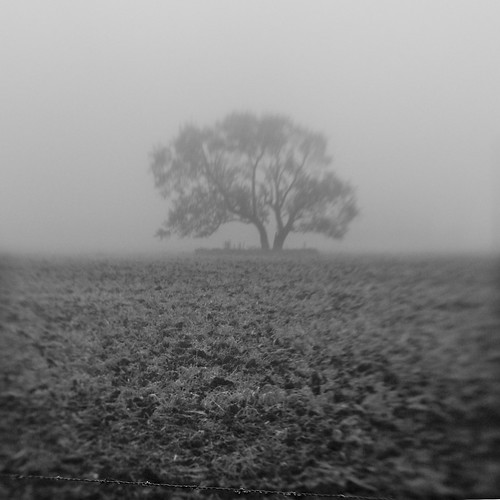After our trip downtown, we headed into the museum district to catch some shows in this area of the city. We knew ahead of time that this would be packed with shows, so we plotted which exhibitions to see in order to maximize our time there, and see the most work we possibly could, given the limitations of time. (Oh, how I wish I could spend more time at FotoFest!)
First, we went to the Menil collection-the Menil was sponsoring a FotoFest-related exhibition called “Leaps into the Void: Documents of Nouveau Realist Performance.” According to the brochure, “On October 23, 1960, photographer Harry Shunk’s camera captured artist Yves Klein hurling himself from a Parisian rooftop. The now iconic image, which has had a lasting influence on performance art, is one of some thirty works-by artists including Niki de Saint Phalle, Jean Tinguely, Christo, and Arman-gathered for the exhibition “Leaps into the Void.”
The thing about the Menil is that, well, it doesn’t even have to have any photography in it to make it special. It’s a wonderful building, great architecture, and a great collection, without the addition of any photography. Seriously. This is like a “must see” if you ever decide to visit Houston. The FotoFest exhibit was interesting in that it explored the link between performance art and photography. I have to admit, this is one area of photography (and, in some ways, art itself) I’m not very up on (or into.) I kind of let the whole performance art thing sort of slide by me, which is probably short-sighted on my part but, hey, I have limited resources and there’s only so much art even I can take, so that’s how it goes. I did love seeing the Menil, and l loved the photos there, so I would not label it a waste of time, not by any stretch, but the limitations of my knowledge and appreciation here really come into play, so I won’t give you a more detailed description, other than to say I enjoyed viewing the collection. The Menil has great work-the Christo piece was next to one of Mondrian’s color block pieces, and I remember thinking, “oh, I’m going to have to blog about that!” In fact, I almost inadvertently backed into a Mondrian. I’m sure that must make me one of the worst art clowns who ever lived, let alone pick up a pen (or, um, “typeface” as the case may be) so let’s just put that out there and leave it at that.
Ok, so now that I’ve bored you with the “I love the Menil. Go to the Menil. Enjoy the Menil” talk, I should also mention the Houston Center for Photography (HCP.) This little talk is going to come with a warning.
I love HCP, really I do. I think I was actually a member of HCP at one point (I might still be.) HCP usually has some of the best photography exhibits in town (Houston) and it’s a great place (usually) to go and sit and enjoy work. It’s a creative place, with digital darkrooms available to outsiders, learning and classes going on all the time, and almost always has some cutting edge work. This time around, we were not so much disappointed, no, some of the work was actually quite nice, but the place itself really put us off.
For starters, well, let me talk about the work I liked first. Anthony Goicolea’s series “Related” explored his family-four generations of Cubans who fled to the United States in 1961 just after the Bay of Pigs invasion. Leaving Cuba with only their photographs and “wearing their Sunday best” the series was a worthy exploration of family documentation as well as a personal exploration. This was work worth seeing.
W.M. Hunt’s “Regroups” was an interesting exhibition. As a collector, he amassed group photos from different periods of time, across different landscapes. Some might right off this type of work as “outsider” art, so be it, but it was interesting to see, probably more for the historical relevance than the pure “fine art” aspect of it. It too was an exhibition worthy of a look.
I had seen Beatrice Reinhardt’s “American Clubs” series before and it was no less powerful this time around. The work explores social spaces-the type of spaces like VFW halls, Community halls, Gun and Hunting clubs, and the sort of places where people come together, but remain apart. It’s an interesting series and she shot it well, so this work too is worthy of a look.
Perhaps one of my favorite things about HCP, which was sadly ruined this time around, is the library. Tucked in the back of the building is a wonderful photo library, complete with lots of out-of-print, hard to find, and just oddball photo books. This is a favorite spot, one I happily enjoy visiting whenever I made it down to HCP. This time, however, the space was occupied by some lady loudly talking on her cell phone. Sitting there for at least 20 minutes, she was carrying on a full conversation quite loudly, preventing myself and several others from using the space as a library (it’s intended purpose.) Sadly, HCP needs to implement a complete “No Cell Phones” policy-there were people yapping on the phone in all corners of the joint, with the library being the sort of “last straw.” It’s rude to do this, but it really interferes with people enjoyment of the work. This type of behavior is how the “snob factor” really comes into photography-people think photographers are snobs, and we aren’t, but we’re viewed that way as long as photographers behave rudely and put off patrons by ignoring them and yapping loudly on their cell phones instead. Please, I’m begging you, HCP, implement a “no cell phone zone” not just for your own good, but for the good of the medium.
There I said it. Now, let’s move on.
We went to the Anya Tish Gallery to view Begona Egurbide’s “Precipice” exhibition. I will address this in a separate post, since it was my high point of FotoFest and deserves a full post all by itself. To avoid spoiling it, I will only say that it was followed a close second by Charles Grogg’s “Reconstrucitons” which I will talk about next.
After Anya Tish, we went over to the “Gallery Row” area of Houston, to check out the shows there. Gallery Row has about 8 or 9 different galleries, arranged on a single block, it’s sort of a side street. It’s a wonderful palace to visit and this time around it did not disappoint. We had missed the Keith Carter exhibit at McMurtrey Gallery but they still had some of his work up and we talked with the people there for a while. It was mostly work from Keith I had seen before, with a few exceptions-he has a new figurative series and they had a few pieces left from that for us to take a look at. Keith’s work is very narrative and that too was a big theme this year as well.
Charles Grogg’s “Reconstructions” was a must-see. This is one of the examples I hinted at earlier, where visual artists are giving the camera a new look and moving fine art photography out of the realm of the traditional. Grogg’s series was handcrafted by printing platinum/palladium images on Japanese sumi-like paper and then hand stitching them together to create a single handcrafted piece. Each single finished piece was made up of these many paper prints, and each was more stunningly beautiful than the next. This goes way beyond the “I can paint with my camera” and plants photography firmly into the visual arts media. From Grogg’s website, his process is described as, “The images in this portfolio are platinum/palladium, handcoated on handmade Japanese gampi. Each piece of the nine-piece image is individually exposed under sunlight, washed, dried, and then sewn with cotton thread onto a larger piece of Japanese washi. Each print is then float mounted in a walnut, maple, or kiaat espresso-stained artist’s frame.” These were absolutely beautiful to see and I would encourage you to take a peek at this work on Grogg’s website here. I really cannot do justice by trying to describe these prints, this just falls into the “Go! Look! Now!” category and it’s one of the things I so love at FotoFest-all the little discoveries that happen along the way.
I bought a book of Michael Levin’s “Zebrato” series at the Thornwood Gallery because I fell in love with this tone poet’s black and white images. Sometimes, you just get taken by the tone, and that’s what happened to me the moment I saw Levin’s work. I’m a sucker for good tonal range, what can I say? Thornwood had some great black and white work up, as did the John Cleary Gallery.
We ended our (oh so long!) day with a stop at the Museum of Fine Arts Houston’s exhibition which was also packed full of work. The gift shop there alone is worth the trip-I managed to pickup two Cindy Sherman books, one I had wanted for a long time. They had a copy of her “Clowns” book which I had wanted for a while and which is almost impossible to find on places like Amazon or even in the local bookstore. I’d have to say the prices were a bit higher this year, though last time I might have gotten lucky with the big Brassai book for $5. Of course, that almost killed me, since it was so big, but it’s still a beautiful book, I’m glad I lugged it back from Houston. One of my other photographer friends, BJ, said she stopped in the Half Price Books in Houston and snagged several books she wanted for $1 so I think the bargains were still out there, just maybe I had gone book shopping a bit more this year, in the days leading up to my trip to FotoFest, so I wasn’t as eager to jump in quite as much. The gift shop is still a high point of the trip for me, as they always seem to have something on sale and, even in a bad year, I wind up taking three or four books home, so it’s all good there.
Still to come, my high point of FotoFest (more on “Precipice”) and some of the things I managed to miss (yes, believe it or not, even seeing all of this work, I did manage to miss some things I wanted to see.)
Until next time…

